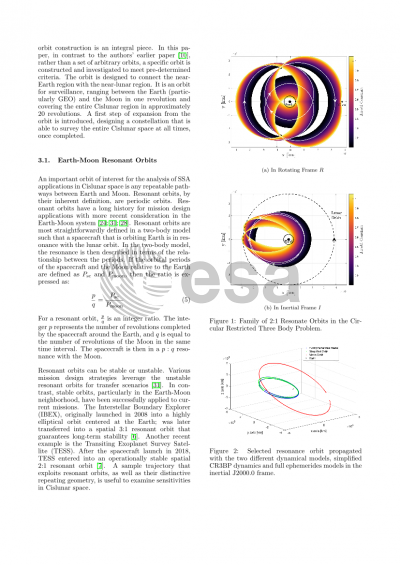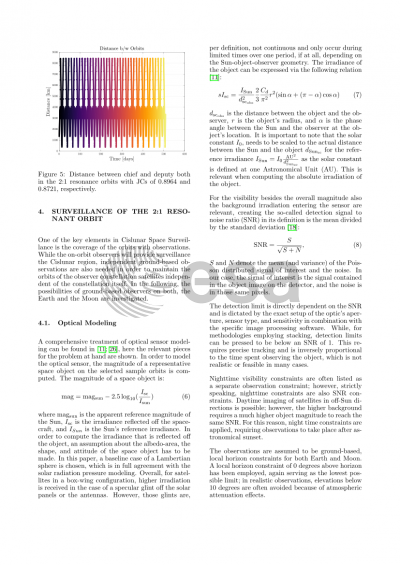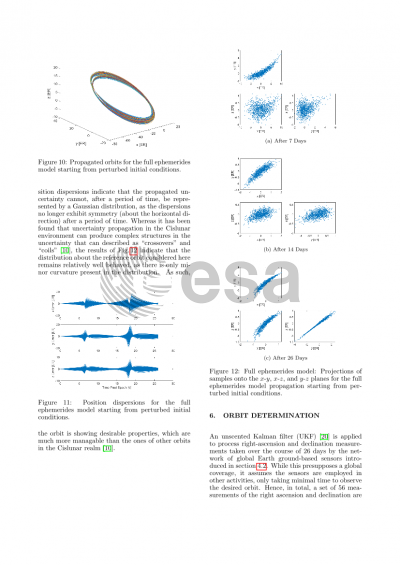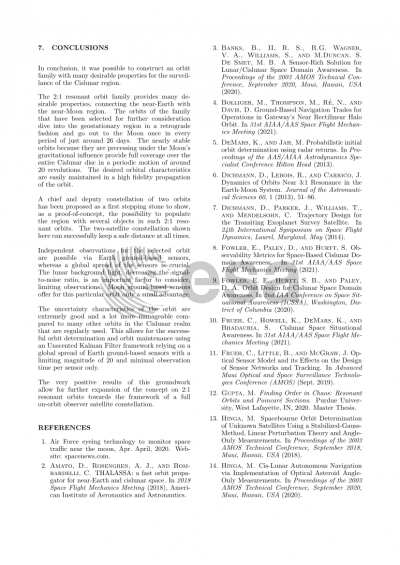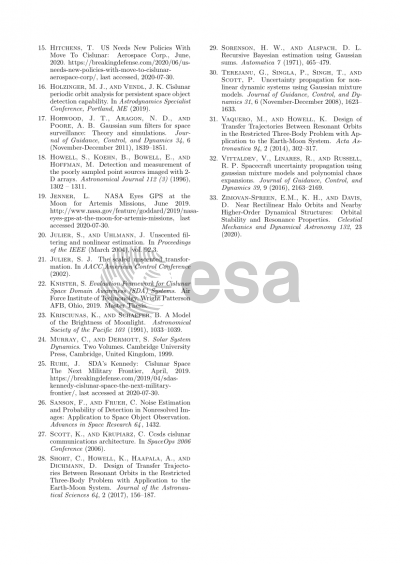Document details

Abstract
Cislunar space denotes the region of space between the Earth and the Moon including the vicinity of the Earth and the Moon itself. Space Traffic Management aims at engineering solutions, methods and protocols that allow to regulate space fairing in a manner that at the same time provides access but also enables a sustainable use of space. It is closely connected to Space Situational Awareness (SSA) or also sometimes also called Space Domain Awareness (SDA), which aims at providing comprehensive knowledge on all objects in a specific region without necessarily having direct communication to those objects.
STM and SSA are actively researched and applied in the near-Earth region. However, space fairing including armed forces and commercial interests are expanding more and more into the cislunar region. While at the moment only a handful of human-made objects are in the cislunar space further from the earth than the geosynchronous orbital (GEO) region, this situation is about to change.
This paper is based on previous work of the authors, re-defining the terminology from the near-Earth to the Cislunar realm and defining how methods need to change for the cislunar space beyond GEO compared to classical near-Earth STM and SSA (AIAA Space Flight Mechanics Meeting, Feburary 2021).
In this paper, actual methods for comprehensive Space Traffic Management are shown. Two different orbit families are introduced. One family are the Near Rectilinar Halo Orbits (NRHO) and the second, a Earth-Moon 2:1 resonant orbits that actually transfers from the near Lunar region to the near-Earth GEO and LEO region. Both orbits are investigated for their suitability for space-based telescopes. Especially the transfer orbit has pristine qualities to interact with both, the near-Lunar and near-Earth region at minimal fuel (delta v, respectively) usage. For the space-based telescopes, 30 centimeter apertures are assumed and the detection limit based on the sun-object-observer geometry is applied. The detection capabilities are shown in dependence of the orientation, shape-albedo and size properties of the objects that are sought to be detected. A constellation of overlapping 2:1 Earth-Moon Resonant orbits, which form a flower pattern is introduced. This formation can provide even with those relatively small telescopes a good coverage of the entire cislunar region of medium sized, sun-oriented objects.
The second part of the paper focuses on the reverse problem. The orbit determination problem for an Earth ground-based or lunar-ground based observer of the objects of the LRHO or 2:1 Earth-Moon Resonant Orbit. For the ground-based observations, 50cm to one-meter apertures at standard observation locations are assumed. For the observations, local horizon and night-time conditions are taken into account besides detection limits. The constellation spacecrafts are assumed to be sun-oriented with their panels. Based on the windows during which observations can be collected under those realistic assumptions, this paper shows initial orbit determination from scratch without prior information solely based on electro-optical observations for orbits from those two families and the orbit update step. The uncertainty characteristics in the cislunar realm do not form the from near-Earth objects well-known banana-shape in propagation but actually becomes multi-modal. A Gaussian mixture representation is used and the performance in comparison with the simulated truth objects is shown.
Preview


